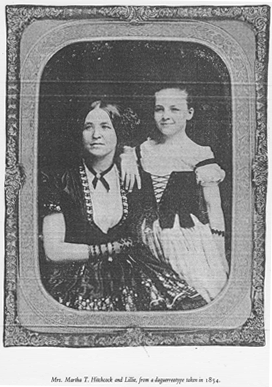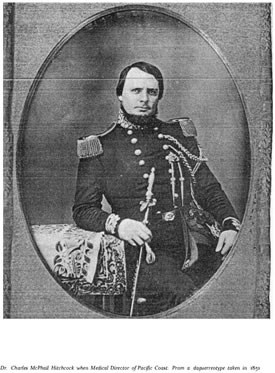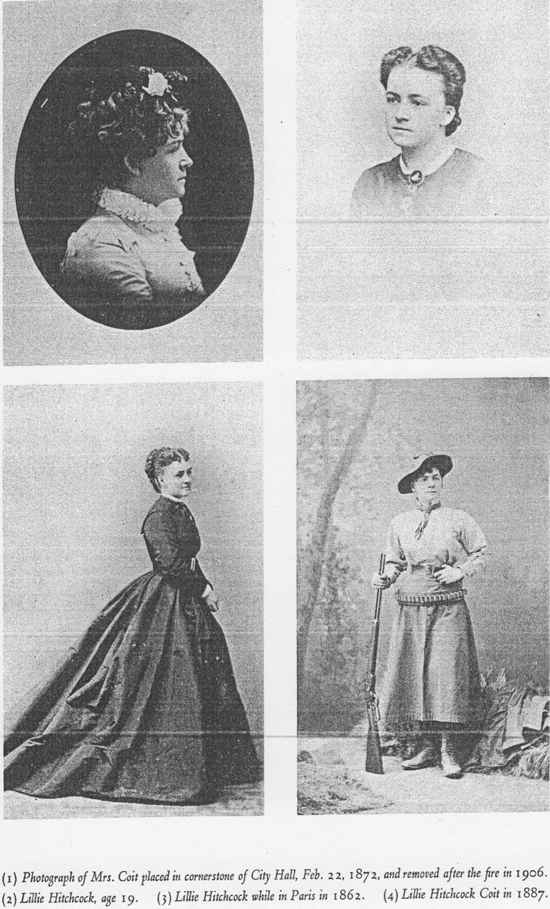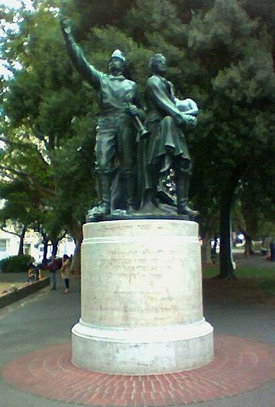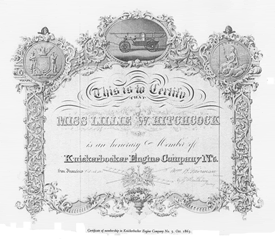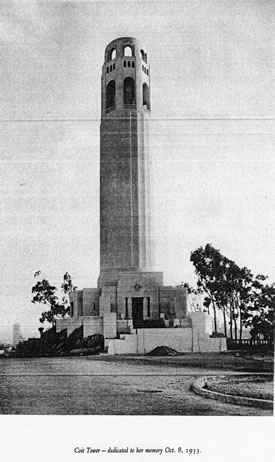
- Guardians Home
- SFFD Home
- Site Map
- Historical Review
- Apparatus
- Chiefs of Department
- Chronology
- Charles H. Ackerson
- Charles J. Brennan
- Keith P. Calden
- Andrew C. Casper
- Emmet C. Condon
- Robert L. Demmons
- John H. Dougherty
- Charles P. Duane
- Joanne M. Hayes-White
- George H. Hossefross
- Francis P. Kelly
- Frederick D. Kohler
- Joseph A. Medina
- Thomas R. Murphy
- William F. Murray
- Jeanine Nicholson
- Edward J. Phipps
- David Scannell
- Patrick H. Shaughnessy
- Albert J. Sullivan
- Dennis T. Sullivan
- Paul J. Tabacco
- Mario H. Trevino
- Edward P. Walsh
- Franklin E. R. Whitney
- Companies
- Events
- Past Events
- SFFD 150th Anniversary
- PPIE 100th Anniversary
- 1906 Expo
- 1989 Quake Party - 2009
- 65' Ladder Presentations
- Broderick & Terry Duel
- Coit Tower 75th Anniversary
- Cole Valley Fair
- Gold Hydrant - April 18th
- Jimmy's Car Show
- Lower Haight Street Fair
- Lotta's Fountain - April 18th
- Musters
- Presidio Car Show
- Station 28 75th Anniversary
- Fireboats
- Firehorses
- Firehouses
- Fires
- In The Line Of Duty
- Museum Collections
- Musters
- Notable People
- Organizations
- Gift Shop
- Volunteers
- Related Links
- Contact Us
- Research Requests
- Photo Gallery
- Videos
- Donations
| Notable People:
Lillie Hitchcock Coit
One of the most unusual personalities ever connected with our Fire Department was a woman. She was Lillie Hitchcock Coit, who was destined not only to become a legend but to attain that eminence long before her life ended. She came to this city on the ship Tennessee in 1851 from West Point, where her father, Dr. Charles M. Hitchcock, was stationed. Dr. Hitchcock served in the U.S. Army during the Indian Wars. During the Mexican War he performed a splendid piece of surgery on Colonel Jefferson Davis, saving his leg. Davis went on to be U.S. Secretary of War and President of the Confederacy. Seven years later, when only 15 years old, she began her famous career with Knickerbocker Engine Company No. 5. On one afternoon that pioneer fire company had a short staff on the ropes as it raced to a fire on Telegraph Hill. Because of the shortage of man power, the engine was falling behind. Oh, humiliating and bitter was the repartee passed by Manhattan No. 2 and Howard No. 3 as the total eclipse seemed to be but a matter of seconds. Then suddenly there came a diversion. It was the story of Jeanne d 'Arc at Orleans, The Maid of Sargossa and Molly Pitcher of Revolutionary fame all over again. Pretty and impulsive Lillie Hitchcock, on her way home from school, saw the plight of the Knickerbocker and, tossing her books to the ground, ran to a vacant place on the rope. There she exerted her feeble strength and began to pull, at the same time turning her flushed face to the bystanders and crying: "Come on, you men! Everybody pull and we'll beat 'em!" A Famous Day For Little Lillie Everybody did come and pull and Knickerbocker No. 5 went up the slope like a red streak and got first water on the fire. That was a famous day for Lillie. From that time on she caught the spirit of the Volunteers and Dr. Hitchcock had difficult work attempting to keep his daughter from dashing away every time an alarm was sounded. As it was, there never was a gala parade in which Lillie was not seen atop Knickerbocker No. 5, embowered in flags and flowers. She was, literally, the patroness of all the firemen of her city. From her earliest infancy she was curiously fascinated by the red shirt and warlike helmet of the firemen and she gloried in the excitement of a big blaze. Almost invariably, with the energy and speed that the most agile fireman might envy, she hastened to the scene of action. Lillie often said she loved courage in a uniform. San Francisco society of that day was exclusive and rigid. As the Hitchcocks were valued members, society frequently agonized over the vagaries of its Lillie. But she seems always to have done exactly as she pleased without giving real offense. On October 3, 1863, she was elected an honorary member of the Knickerbocker Company, and always regarded that honor as the proudest of her life. She wore the numeral as an ornament with all her costumes, along with the gold badge presented at the same time.
As Miss Hitchcock became older, she gave up the habit of following the engine, but the tie that bound her to the company was as strong as ever. If any member of a company fell ill, it was Lillie Hitchcock who gladdened the sickroom. And! should death call him, she sent a floral tribute as final expression of her regard. A Steadfast Love For California After her marriage to Howard Coit, a caller at the San Francisco Stock and Bond Exchange, she traveled extensively in the East, in Europe and the Orient. Notwithstanding all her wanderings, her love for California was steadfast and she at length made it her permanent home. She was a notable figure even at the court of Napoleon III and a maharaja of India, and later when she came back to San Francisco to live she brought with her a remarkable collection of gifts from royalty and others. They included gems of rare value, object of art, mementoes and souvenirs, some of them priceless. When Mrs. Coit died here on July 22, 1929, at the age of 86, she gave practical evidence of her affection for San Francisco. She left one-third of her fortune to the city "to be expended in an appropriate manner for the purpose of adding to the beauty of the city which I have always loved." For several years after her death, there was question as to the most fitting interpretation of the "appropriate manner" in which to make the memorial. The executors of her will at last determined to erect a memorial tower in honor of this colorful woman and also a memorial tribute to San Francisco's firemen. Both have been completed for some time. The novel appearance of the 185-foot cylindrical tower which stands atop Telegraph Hill is surely a significant symbol to the memory of one whose individuality made her as outstanding an example of contrast to her days as is this unusual form of memorial shaft. The second memorial to her was unveiled in Washington Square, December 3, 1933. It is a sculptured block representing a life-sized group of three firemen, one of them carrying a woman in his arms. By: Frederick J. Bowlen, Battalion Chief, S. F. F. D. (1939) LILLIE HITCHCOCK COIT5 1843 - 1929 At this time (1851) the firemen of San Francisco were in all their glory - they had won their laurels on many a fiery field, and snatched it from the flaming jaws of death. They had shown courage, a daring and devotion never excelled in any cause. The best men in San Francisco belonged to these companies and it was considered an honor to be a fireman. Naturally enough they became the objects of the children's admiration - in their eyes every red shirt covered a hero. Page 14 Her childish admiration for the firemen (all volunteers in these days) grew as the years went on, and this devotion led to that unique phase of her picturesque life, when she became the only woman member of a fire company. Page 18 There would have been no San Francisco without its famed volunteer fire companies - lawyers, doctors, bankers, merchants, all belonged, and she knew every one of them. Her home was just opposite Number 4, but it was to Knickerbocker Number 5 that she gave allegiance. She, like everyone else, went to all the fires that happened in the day time, and at the first clap of the bell at night she always awoke, and then she would pace the floor until the engines were again housed. Many times she would order coffee and a hot supper served at the Oriental Hotel for the members of her company on their return, and her indulgent father was only too willing to pay the bill. Knickerbocker Number 5 became so attached to her that they admitted her to honorary membership October 3, 1863, and her certificate of membership was her most prized possession. After this she was expected to go to all fires that occurred in the day. And at night, if her light was not burning until her engine was housed she was fined. With the tremendous rivalry between the fire companies, Number 5 always regarded her presence worth more than that of many men, for they redoubled their efforts when she stood by looking on with pride at the work of “her company.” Page 19 In those days not only were the engines run to the fires by men pulling ropes but the pumping was also done by man power, As a young lady returning from Grace Church, where she had been to a rehearsal of a wedding at which she was to be bridesmaid, she heard the fire alarm sounding. Immediately she had herself driven to the fire on Market Street. She found two ladders up and her Number 5 and some other company both playing water on the flames. The pipeman on the other ladder jeered at Number 5's pipeman and pointed her out in her Paris dress saying that she was only a ‘Featherbedder.” Number 5's man was furious and to disprove the charge turned the hose full on her and ducked her well. Of course she was surprised, but seeing it had been done by Number 5 she waved her hand and took her ducking as a fireman should. Number 5's pipeman then played the stream on the burning building, and her fellow member screamed to the other pipeman - “Told you she was no “Featherbedder.” She always wore a little gold 5 pinned to her dress and signed herself Lillie H. Coit5. She asked that this 5 be left on her at the end. Everything she had, even her linen, was marked - L.H.C.5. Lacemakers even worked it into her monogram on her fans. In December, 1866, the paid fire department of San Francisco was organized, and she became a veteran. Knickerbocker Number 5 always had an annual dinner October 17th , or as she called it, “Numbers 5's birthday,” for October 17, 1850 was the date that the company was voted in the department. It was always her self-appointed duty to see to the table decorations and flowers. Later in the evening she would appear at these dinners dressed in a black silk skirt, red fire shirt and black tie, and her veteran's belt - she usually carried her helmet. Of course a toast was drunk to her health at each dinner. Page 20 The Funeral of Lillie Hitchcock Coit5 Mrs. Coit passed away July 22, 1929. Had she lived a few more weeks she would have been eighty-six years old. The next morning at the funeral parlor(s) I found a young fireman standing guard at the door of the room where she lay. I asked to what company he belonged and he replied Number 5.” A guard from that company keep watch day and night while she lay there. They considered it an honor that they had been selected to keep vigil over that tiny, white haired old lady, enshrouded in a cloud of lace, pinned with her precious “5.” Before the cortege reached Grace Cathedral a company of firemen fell in ahead and led the procession. At the Cathedral steps stood three of the four living volunteer fire men: Samuel Baker, Captain J. H. McMenomy, and Richard Cox. They constituted themselves a special guard of honor and proceeded the pall bearers. At the end of the service someone tried to hurry these old Volunteers - but they took their own time and each laid his hand reverently on the casket and paused to say his silent goodbye before the procession could move on. They felt that she belonged to them and it was exactly what she would have liked. After going part of the way, the firemen parted ranks, stood with bared heads while she was borne between them. I thought this was San Francisco's farewell to her - but this was not to be so, for the city intends that she shall be remembered by the beautiful observation tower which it has erected to her memory. Page 45 The Will of Lillie Hitchcock Coit5 Lillie Coit left one third of her estate ($225,000) to the Supervisors of San Francisco with the request that they should “expend the same in an appropriate manner for the purpose of adding to the beauty of said city which I have always loved.” They decided that nothing would so add to the beauty of the city as a tower on the top of historic Telegraph Hill, where she had so often played. Page 46 There was money left over in Lillie's bequest after the building of Coit Tower. The remaining available funds were used for a statue dedicated to the volunteer firemen of San Francisco. This statue, in Washington Square, is of three firemen, one of them is holding a small child. This monument is one of the few pre-9/11 monuments in the United States that honored firefighters. The Dedication of Coit Tower
California Historical Landmark 91 On October 8, 1933, city officials, civic organizations, the army, the pioneers, the Sons and Daughters of the Revolution, the Sons and Daughters of the Golden West, the firemen and old friends gathered there to dedicate this tower to the memory of the one they had always loved. Knickerbocker Engine Number 5 was sold years ago to Carson City, and later discarded as too antiquated. After Mrs. Coit's death, a few friends, who know how dear it had been to her, bought it and gave it to the Museum in San Francisco. Page 46 As, at the death of an officer, his sword and his reversed boots are borne by his riderless charger, so at the dedication of the Coit Tower her fire helmet and veteran's belt, rested on Number 5 as it was dragged slowly up Telegraph Hill and stood there mutely speaking of the pioneer days. Page 47 A Present Day Myth About Lillie Coit The myth is that Lillie Hitchcock Coit was the first woman firefighter in the United States. Due to the fact that Lillie W. Hitchcock was made an honorary member of Kinckerbocker Company No. 5, she has falsely been given the title of the first woman firefighter in the United States. Please note that she was made an “honorary” member, not given a full membership, of Knickerbocker Company No. 5. There is no documentation that Lillie ever was allowed to participate in extinguishing a fire, but she was involved in all other aspects of “her company.” Not a Myth About Lillie Coit At age 15 (1858) Knickerbocker 5 adopted Lillie as their mascot and in every parade she was given the honor of riding atop the engine's wash box amid wreaths, garlands and bouquets of choicest flowers, like some ballroom belle. Previously, Lillie had been considered the pet of the young gold rush town of San Francisco. At age 17 she and her mother left for Paris and returned three years later in the spring of 1863. Upon her return Lillie quickly became the belle of San Francisco.
While Mrs. Coit was constantly doing things that no other woman of her time would have dared to, her escapades were always innocent and she was never touched by the breath of scandal - everything was always open and above board. In her unconventionality, her lack of concern as to what others would think of her, she was far in advance of her times. (LHC5- Page 36)
A Present Day Myth of Coit Tower
Mr. Brown also designed many other San Francisco buildings such as the Beaux-Arts City Hall (1915) where his attention extended to the smallest details, such as, light fixtures, floor patterns and even doorknobs that feature the seal of the city. In 1932 he designed the War Memorial Opera House and in collaboration with G. Albert Lansburgh, the Veterans Building. He designed the rotunda for the City of Paris department store at Geary and Stockton Streets which is now preserved in the Niemen Marcus building. His other accomplishments extend throughout California and across the Nation. |
||||


